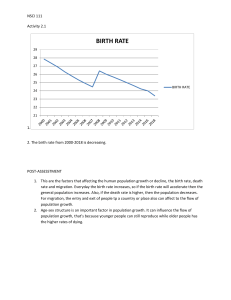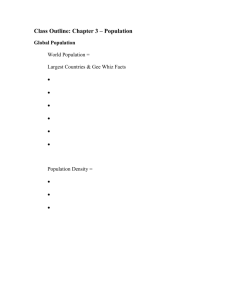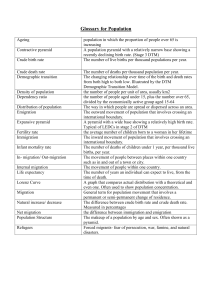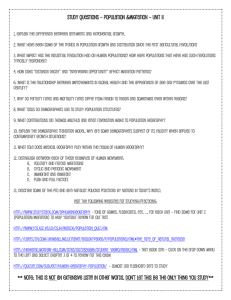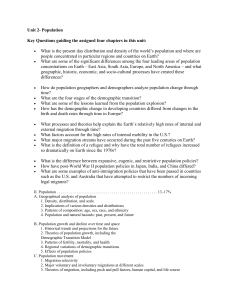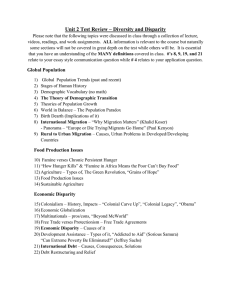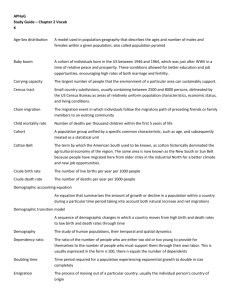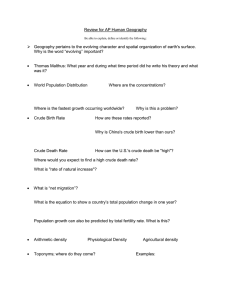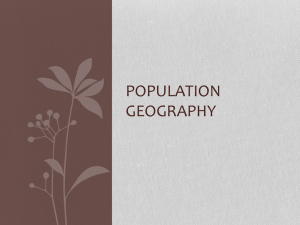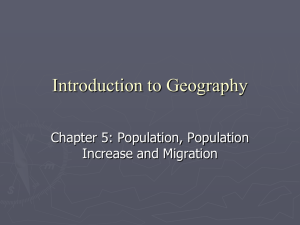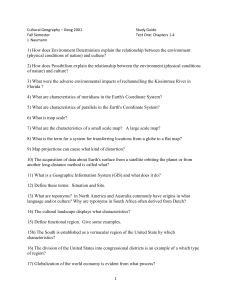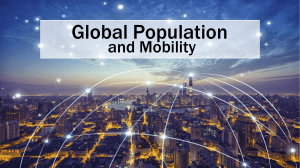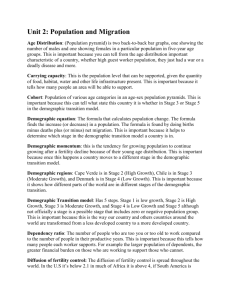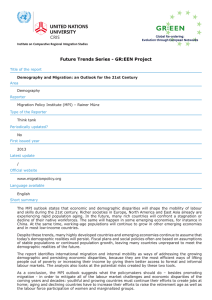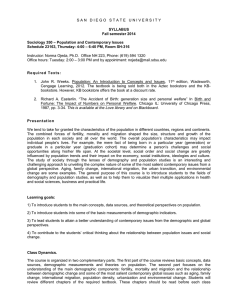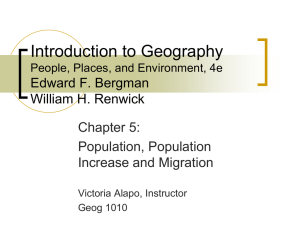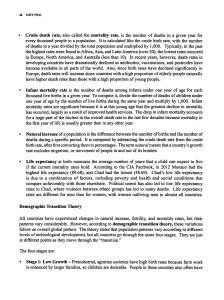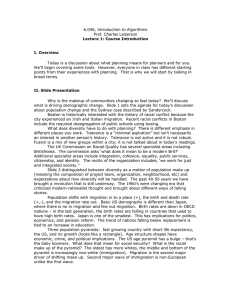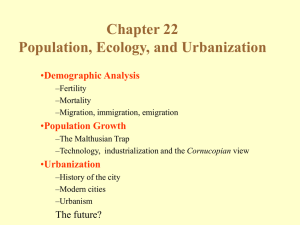unit 2 vocabulary
advertisement
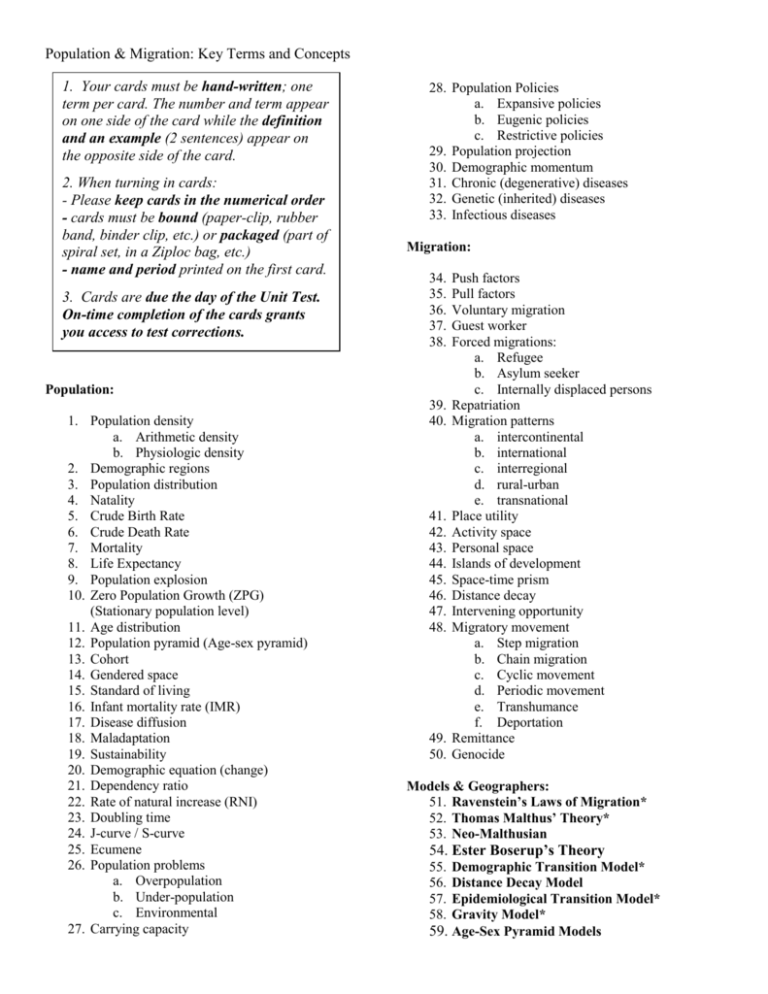
Population & Migration: Key Terms and Concepts 1. Your cards must be hand-written; one term per card. The number and term appear on one side of the card while the definition and an example (2 sentences) appear on the opposite side of the card. 2. When turning in cards: - Please keep cards in the numerical order - cards must be bound (paper-clip, rubber band, binder clip, etc.) or packaged (part of spiral set, in a Ziploc bag, etc.) - name and period printed on the first card. 3. Cards are due the day of the Unit Test. On-time completion of the cards grants you access to test corrections. 28. Population Policies a. Expansive policies b. Eugenic policies c. Restrictive policies 29. Population projection 30. Demographic momentum 31. Chronic (degenerative) diseases 32. Genetic (inherited) diseases 33. Infectious diseases Migration: 34. 35. 36. 37. 38. Population: 1. Population density a. Arithmetic density b. Physiologic density 2. Demographic regions 3. Population distribution 4. Natality 5. Crude Birth Rate 6. Crude Death Rate 7. Mortality 8. Life Expectancy 9. Population explosion 10. Zero Population Growth (ZPG) (Stationary population level) 11. Age distribution 12. Population pyramid (Age-sex pyramid) 13. Cohort 14. Gendered space 15. Standard of living 16. Infant mortality rate (IMR) 17. Disease diffusion 18. Maladaptation 19. Sustainability 20. Demographic equation (change) 21. Dependency ratio 22. Rate of natural increase (RNI) 23. Doubling time 24. J-curve / S-curve 25. Ecumene 26. Population problems a. Overpopulation b. Under-population c. Environmental 27. Carrying capacity 39. 40. 41. 42. 43. 44. 45. 46. 47. 48. 49. 50. Push factors Pull factors Voluntary migration Guest worker Forced migrations: a. Refugee b. Asylum seeker c. Internally displaced persons Repatriation Migration patterns a. intercontinental b. international c. interregional d. rural-urban e. transnational Place utility Activity space Personal space Islands of development Space-time prism Distance decay Intervening opportunity Migratory movement a. Step migration b. Chain migration c. Cyclic movement d. Periodic movement e. Transhumance f. Deportation Remittance Genocide Models & Geographers: 51. Ravenstein’s Laws of Migration* 52. Thomas Malthus’ Theory* 53. Neo-Malthusian 54. Ester Boserup’s Theory 55. 56. 57. 58. Demographic Transition Model* Distance Decay Model Epidemiological Transition Model* Gravity Model* 59. Age-Sex Pyramid Models
